
Lacto fermented pickles are so quick, easy and so dill-delicious to make! All you need is some fresh cucumbers, garlic cloves and fresh dill. This along with some salt and time will give you a mouthwatering, sour pickle that is packed with probiotics, perfect for your gut health! This easy fermented cucumbers are such a summer favourite. It only takes a few days to have the best naturally fermented pickles ready to eat!
Fermented dill pickles are crispy, crunchy, flavourful, and oh-so alive! They are fermented in a salt brine, rather than vinegar to give them that fresh probiotic packed natural pickled cucumbers.
Lacto fermented pickle juice benefits and uses.
Actually the fermented pickle brine is teaming with healthy gut bacteria. I love to use the fermented pickle brine in addition to or instead of lemon juice when making dressings in the summer.
Oh so refreshing for you and your gut, not to mention immunity-boosting probiotics these little fermented cucumbers have!
*In a hurry? Pin for later!
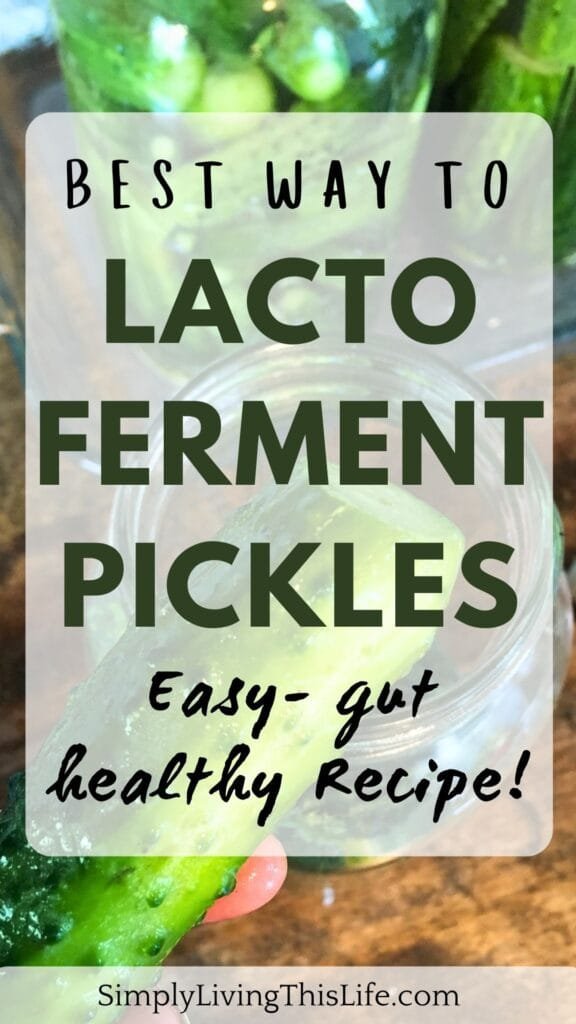
What are lacto fermented pickles vs vinegar pickles?
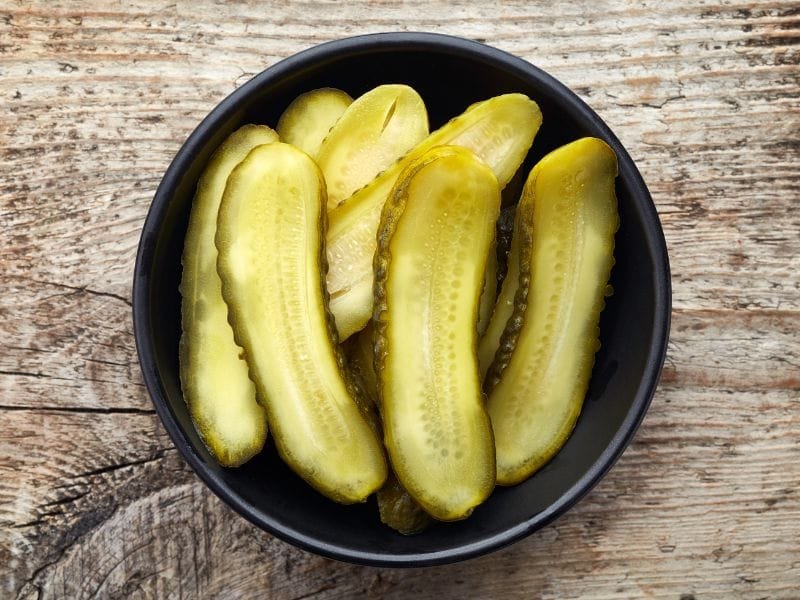
Lacto fermented pickles are made without vinegar, no vinegar is needed at all! Which is good as vinegar may lower the good bacteria in your gut.
One want’s good gut bacteria so that not only will we have happy guts we will have healthy ones too. Up to 70% of ones immune system is housed in our gut, so no wonder we want to protect and support our gut microbiome!
Naturally fermented pickles are fermented in a salt brine rather than in vinegar. The good bacteria takes over and preserves the cucumbers, making cucumber fermented pickles that are full of healthy gut bacteria for you!
Are fermented cucumber pickles the same as fermented pickles recipe?
Totally, fermented cucumber pickles are exactly the same thing as fermented pickles recipe!
Fermenting cucumbers turns the cucumbers into healthy lacto fermented pickles.
Ingredients: Lacto Fermented Dill Pickle Recipe
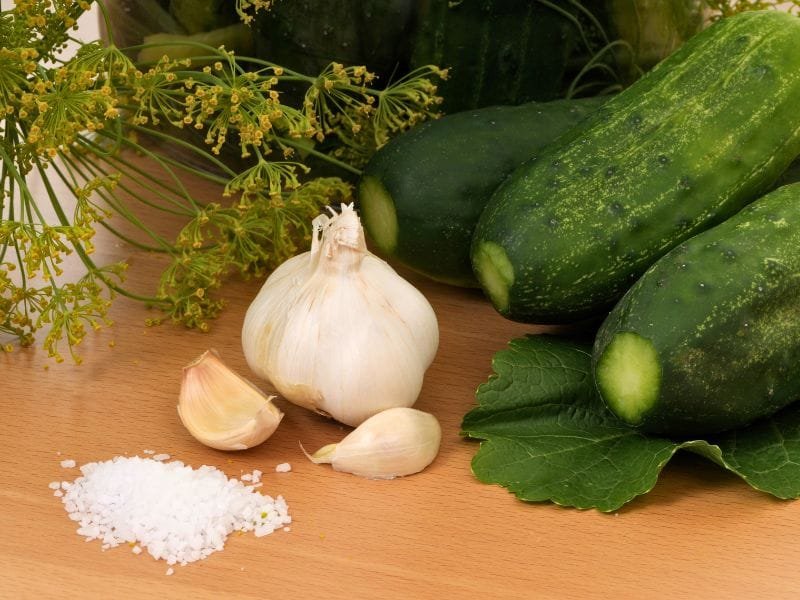
- pickling cucumbers (I’ve made this with regular cucumber as well, but fresh and crispy is ideal.)
- fresh dill
- fresh garlic cloves
- Salt – Himalayan salt or Celtic or Redmonds
- Tannin containing leaves (opt) – Red raspberry leaves, bay leaves, grape leaves, oak leaves, or a couple of slices of fresh horseradish root. Cucumbers contain enzymes that soften them. To prevent this and keep the crispiness add a few red raspberry leaves or a grape leaf to the jar.
Tools You May Need: Lacto Fermented Dill Pickles
This post contains affiliate links, which means I make a small commission at no extra cost to you. See my full disclosure here.
- quart wide mouth mason jar
- half gallon wide mouth mason jar
- fermenting crock
- favourite knife
- cutting board
- measuring spoons
- fermenting weight or cabbage leaf
- fermenting lid or plastic mason jar lid
- glass dish to catch any overflow
Fermented pickles benefits!

Are fermented pickles good for you? Yes! They are the best pickles for gut health. There are no unhealthy ingredients involved at all!
Fermented cucumber probiotics are teaming with healthy benefits for your gut microbiome. Basically lacto fermented pickles are probiotic packed pickles, even the pickle brine is filled with benefits!
While I would never recommend drinking store bought pickle juice, I’d definitely encourage you to use the brine from fermented pickles! Fermented cucumbers brine is teaming with immune-boosting, lactobasillica bacterium. The same good bacteria in your gut.
Happy healthy gut means a happy heathy you!
Instructions: How to make Lacto Fermented Dill Pickles
Prep the Salt Brine
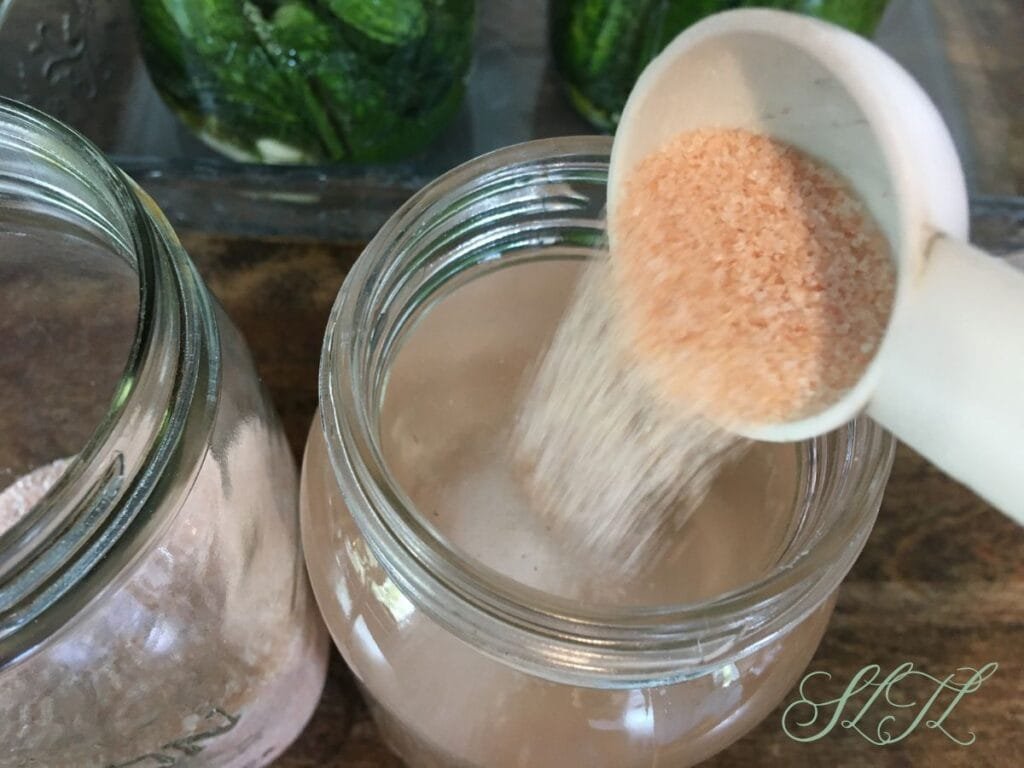
Get ready to ferment cucumbers by making up a 3.75% brine batch by mixing 2 Tablespoons of salt with 1 quart (4 cups) of water until the salt is thoroughly dissolved. Make sure you’re using non-iodized real salt. Stay away from table salt that has been striped of its minerals.
Prep the Cucumbers
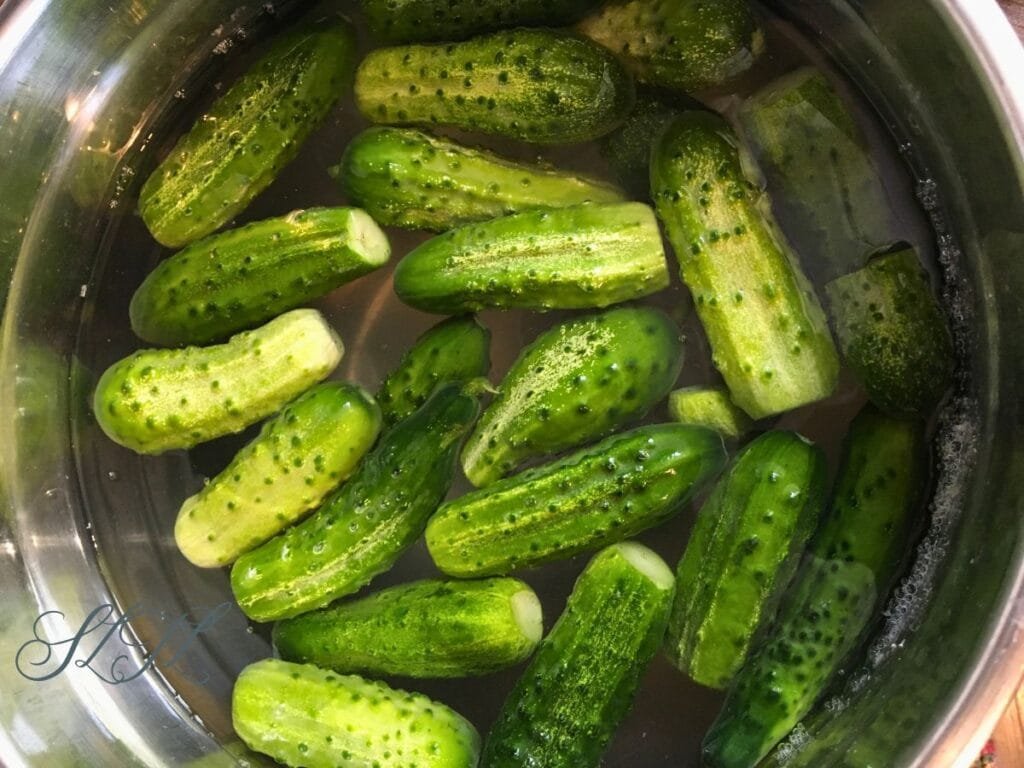
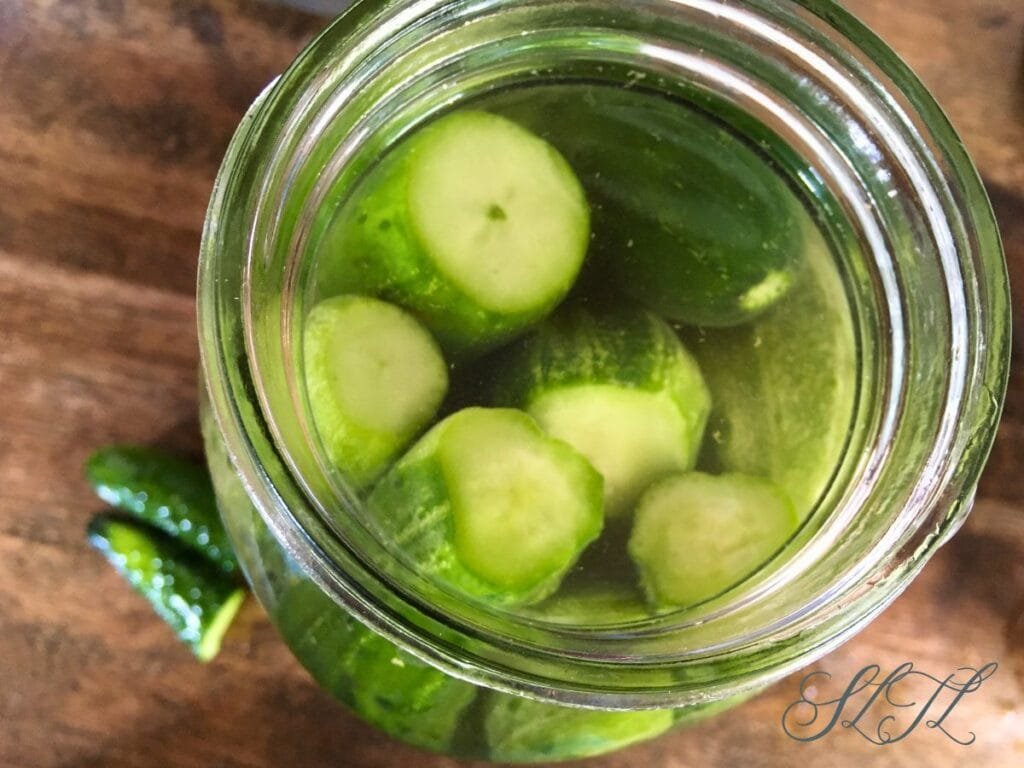
Wash the cucumbers. If they aren’t already freshly picked and crisp, slice off a tiny bit of the blossom end, and soak them in an ice bath for 15-30 minutes to firm and crisp them up. There are enzymes in the blossom end that can make your pickles soft, so be sure to remove them.
Make sure the cucumbers are mold free and firm with no discolouring. If you ferment soft cucumbers you’ll get mushy pickles. Which no one wants.
I recommend using pickling cucumbers of pickling size and leaving them whole. However, I’ve totally cut larger, sandwich cucumbers into thick slices and fermented them successfully. I do find however they don’t last quite as long before losing their crunch, and you can’t let them ferment as long either.
Filling the Fermenting Jar (Crock)
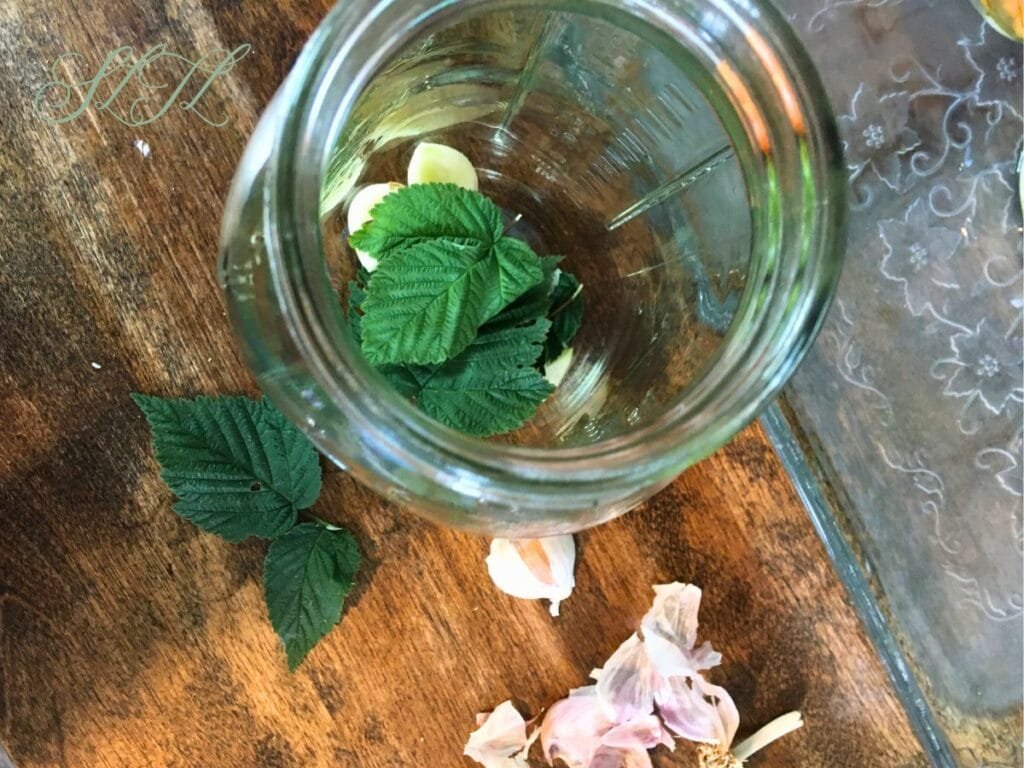
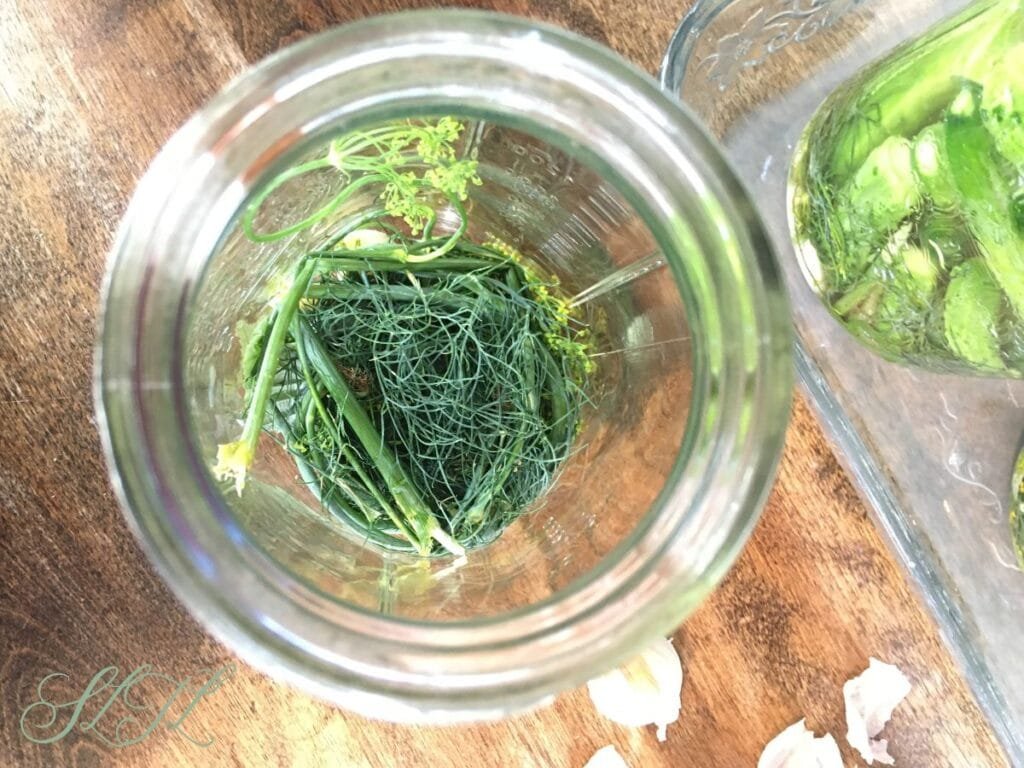
Taking your clean one quart or half gallon mason jar. Or a fermenting crock of any size works too. Place 2-4 tannin leaves per quart at the bottom of the jar.
Add a 1-2 fresh sprigs of dill, and 2 medium size garlic cloves to a one quart mason jar (double this if you’re using a larger fermenting vessel).
Here’s where you can get creative and experiment with flavours. I suggest only using 1 quart jars or smaller when experimenting to see what your favourite is. But lacto fermented dill garlic pickles is always a flavour win!
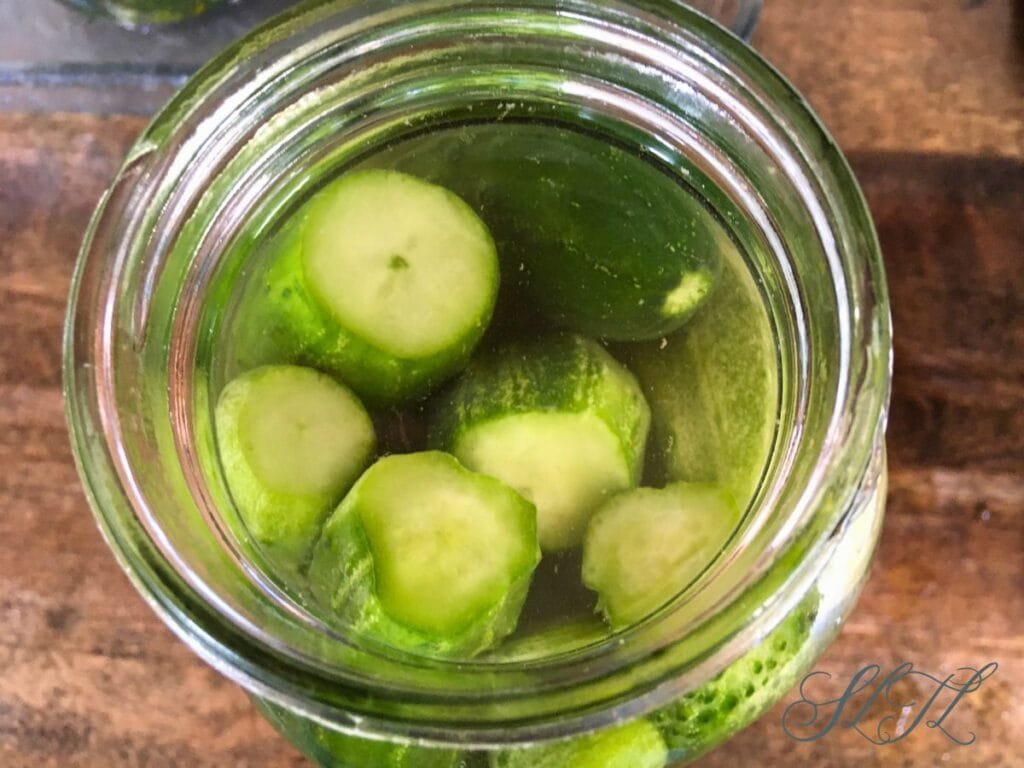
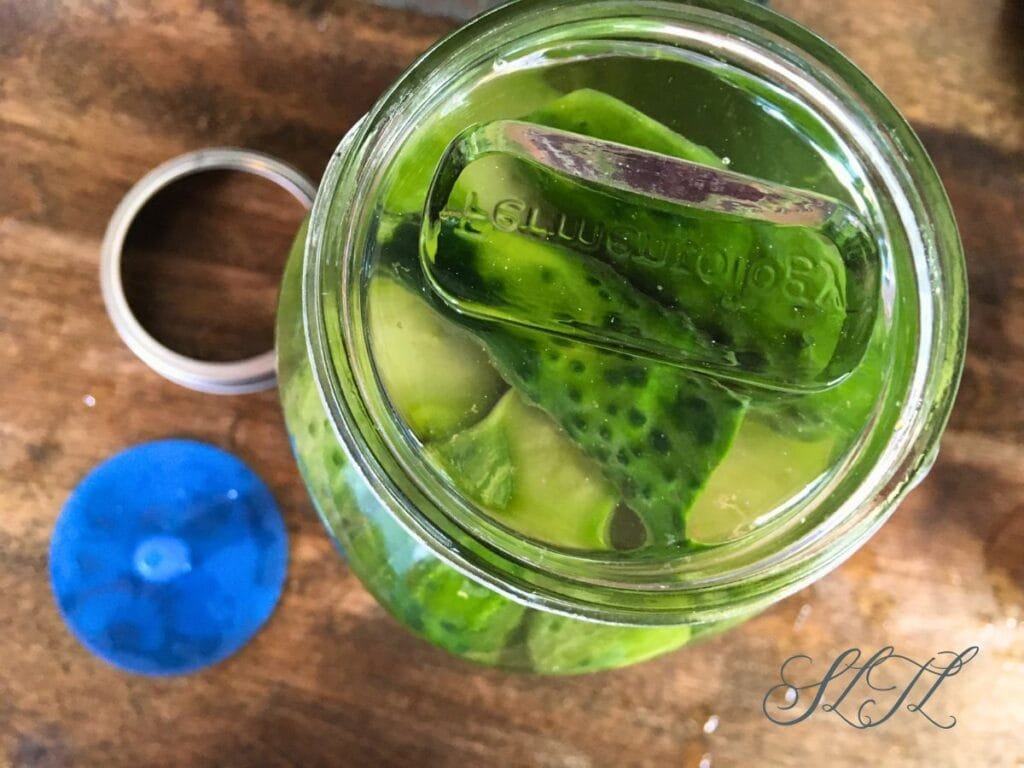
Pack the cucumbers tightly into the jar or crock.
Place a weight or folded cabbage leaf or an onion skin on top of the cucumbers to hold them under the brine and use a weight on top if needed.
This is important because if the cucumbers or dill seeds are not submerged under the brine and become exposed to air they can develop mold, so make sure to spoon any floaters out with a slotted spoon.
Cap with a fermenting lid, airlock, or loosely closed storage lid, the plastic mason jar lids are my favourite to use (no rusting).
Place in a glass dish to catch any brine overflow as the cucumbers ferment.
Fermenting the Cucumbers Process
Place the mason jar in a casserole dish or other glass tray that can catch liquid if/when the ferment leaks. This is totally normal and ok.
Don’t forget to burp your jar daily, unless you are using a fermenting lid or airlock.
To see if the cucumbers have fermented to delicious sour pickles you’ll have to taste occasionally. Start tasting them on day 2-3 once you have seen bubbles forming on the top of the ferment. For this reason I like to leave a few smaller slices on the top to taste test as the days go by.
Depending on the temperature in your kitchen will determine how fast your pickles ferment. If it’s warmer they will ferment faster, if it’s cooler it will take longer.
Once your cucumbers no longer taste salty, rather like tangy sour pickles, refrigerate and enjoy!
Lacto fermented pickles will last about 4 months or a little more in the refrigerator or similar temperature cold storage like a root cellar or cold room.
Variations of Lacto Fermented Pickles
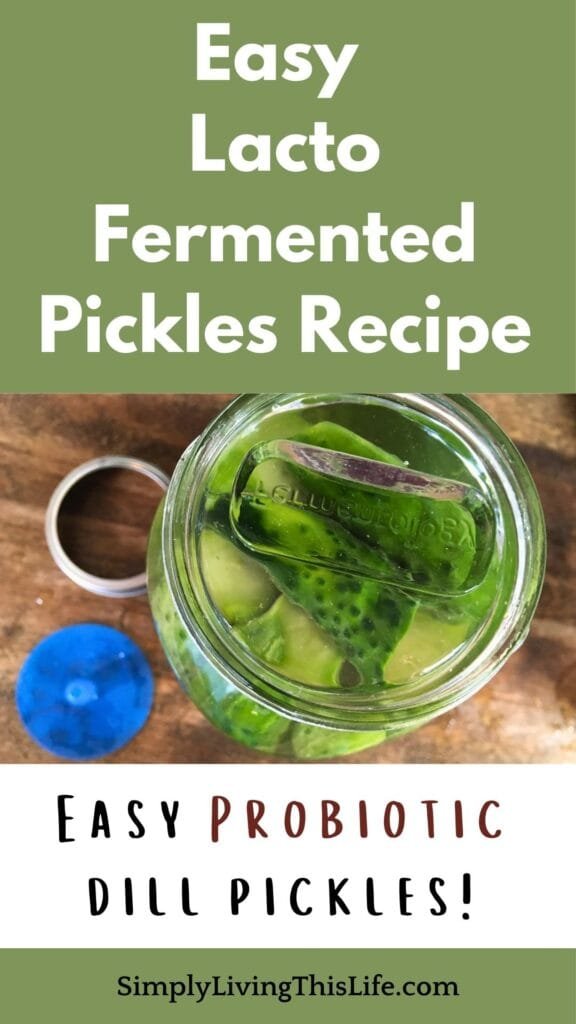
Switch up the herbs: Experiment with fresh herbs, when in season from your garden, to find your family’s favourite combo.
Add a veggie: use fresh veggies like small sweet onions, sliced sweet peppers, or go spicy by adding fresh cayenne pepper or horseradish.
FAQs for Lacto Fermented “Dill” Pickles Recipe
What do you eat lacto fermented pickles with?
These delicious crunchy, sour, tangy pickles are great on sandwiches, in burger buns, on hot dogs, in potato salad, as a side.
It tastes totally amazing anytime you’d usually like to eat pickles!
How long is needed to ferment pickles?
Lacto fermented pickles time will vary depending on the temperature in you home. The hotter your kitchen is the faster the ferment process will go.
I’ve had them ready and still crunchy anywhere between 2-6 days. To know if the fermented cucumbers are done taste occasionally. Refrigerate when the pickles are sour to your taste, yet still crunchy.
The best way to tell is to watch for bubbles forming on the surface of the brine covering your ferment. When you see this around day 2-3, give it a taste (use a clean fork to be careful not to introduce new bacteria).
If it tastes salty it’s not done. If it’s tasting sour then it’s ready to be put into cold storage like your fridge or a root cellar. However, if you want a more sour tangy flavour then let it continue to ferment on your counter a day or two more. Be careful however as over fermenting pickles will make them loose the crispness crunch.
Why are my lacto fermented pickles too salty?
If they are too salty, they need a little more time to ferment or you may need to add less salt next time.
You’ll know your pickles ferment is done when it has lost a lot of the saltiness and is sour to your liking. It should be tangy, not salty, but still crisp. It should taste a delicious tangy-sour with a hint of garlic and dill flavour.
Be careful however as over fermenting pickles will make them loose the crispness and become mushy.
What is the lacto fermented pickles salt ratio?
Make a 3.75% brine by mixing salt with water until the salt is thoroughly dissolved.
This is 2 Tbsp of salt dissolved in 1 quart jar (4 cups) filled with spring or filtered water.
This amount of salt essentially will keep the bad bacteria from growing and helps the good bacteria that preserves the cucumbers to grow.
How long do fermented pickles last?
Fermented pickles will keep about 4 months, at least, in the fridge. If, that is, you can manage to not eat this delicious ferment up faster than that!
How do I know if my fermented pickles have gone bad…?!
You’ll know your fermented pickles have gone bad if it no longer smells pleasant, rather like spoiled or rotten food. If it is mushy or tastes off, it’s bad. Trust your nose!
- Its smell repels you because it’s putrid or rotten, not just sour.
- It’s moldy. Pink or fuzzy is not good.
- It’s mushy.
Why are the fermented cucumbers cloudy?
They are ok! This cloudy substance is the good probiotics that have settled, most often to the bottom of the jar.
As long as you don’t see mold growing, which will look pink or fuzzy, no bad or off smell or mushy then they are ok still. Trust your gut or more accurately your nose and eyes!
Did you make this recipe AND LOVE IT…?
I would be grateful if you could come back and give it 5 stars, let others know what you’ve discovered!

Homemade Pickles with Garlic & Dill
How to easily make fermented dill pickles that are full of healthy, gut-healing probiotics. They are such a flavourful, crunchy, tangy, garlic dill pickle with only 15 minutes of hands on time! These natural pickles perfect as a low-calorie snack, or sliced and added to sandwiches.
Ingredients
- 1-1 1/4 smaller pickling cucumbers
- 1-2 sprigs fresh dill
- 2-3 cloves fresh garlic
- 2-4 Tannin leaves (opt) - Red raspberry leaves, bay leaves, or grape leaves.
- 2 TBSP Salt – Himalayan salt or Celtic or Redmonds (non-iodized)
- 4 cups filtered water (non-chlorinated water)
Instructions
- Make a 3.75% brine by mixing 2 TBSP of salt in 1 quart (4 cups) of water until the salt is thoroughly dissolved.
- Wash the cucumbers and cut the tip of the blossom end off.
- Prep a clean 1 quart mason jar by putting 2-4 tannin leaves at the bottom of the jar.
- To the bottom of the jar add 1-2 fresh sprigs of dill and 2-3 medium size garlic cloves.
- Next pack the cucumbers tightly into the jar. I'd suggest leaving them whole as much as possible for a better crunch, but you can slice them in thick slices if needed.
- Place a weight or folded cabbage leaf or an onion skin on top of the cucumbers to hold them under the brine or just use a weight on top.
- Cap with a fermenting lid, airlock, or loosely closed storage lid.
- Place the mason jar in a casserole dish or other glass tray that can catch liquid if/when the ferment leaks.
- Burp your jar daily, unless you are using a fermenting lid or airlock. Check for any floating seeds and scoop off.
- Taste occasionally to see if pickles are sour to taste then refrigerate & enjoy!
- Lacto fermented pickles will last about 4 months or possibly little longer.
Notes
- Cucumbers need to be mold free and firm with no discolouring. If you ferment soft cucumbers you'll get mushy pickles.
- To crisp and firm up cucumbers, slice off a tiny bit of the blossom end, and soak them in an ice bath for 15-30 minutes to firm and crisp them up.
- Pickling cucumbers are ideal, small enough to leave them whole. However, you can cut larger, or even use sandwich cucumbers, into thick slices and fermented them successfully.They don't last quite as long before losing their crunch, and will typically ferment faster.
- Make sure the cucumbers and dill seeds are submerged under the brine, if they become exposed to air they can develop mold. Simply check daily and spoon any floaters out with a spoon.
- Fermenting time depends on the temperature in your kitchen. If it's warmer they will ferment faster, if it's cooler it will take longer.
- For my kitchen I start tasting them on day 2-3 once I've seen bubbles forming on the top of the ferment.
- Pro tip, leave a few smaller slices on the top to taste test.
Nutrition Information:
Amount Per Serving:Calories: 14Total Fat: 0.16ggTrans Fat: 0gCholesterol: 0mgSodium: 14001mgCarbohydrates: 3gFiber: 1.5gSugar: 1.52gProtein: 1.16g
Freebie – Meal Planning Template
Having a system for meal planning is so key to having more bandwidth! I’ve tried many different kinds of meal planning systems and only found one to work, find out all about it in this post!
Snag this FREE Printable: Meal Planning Template
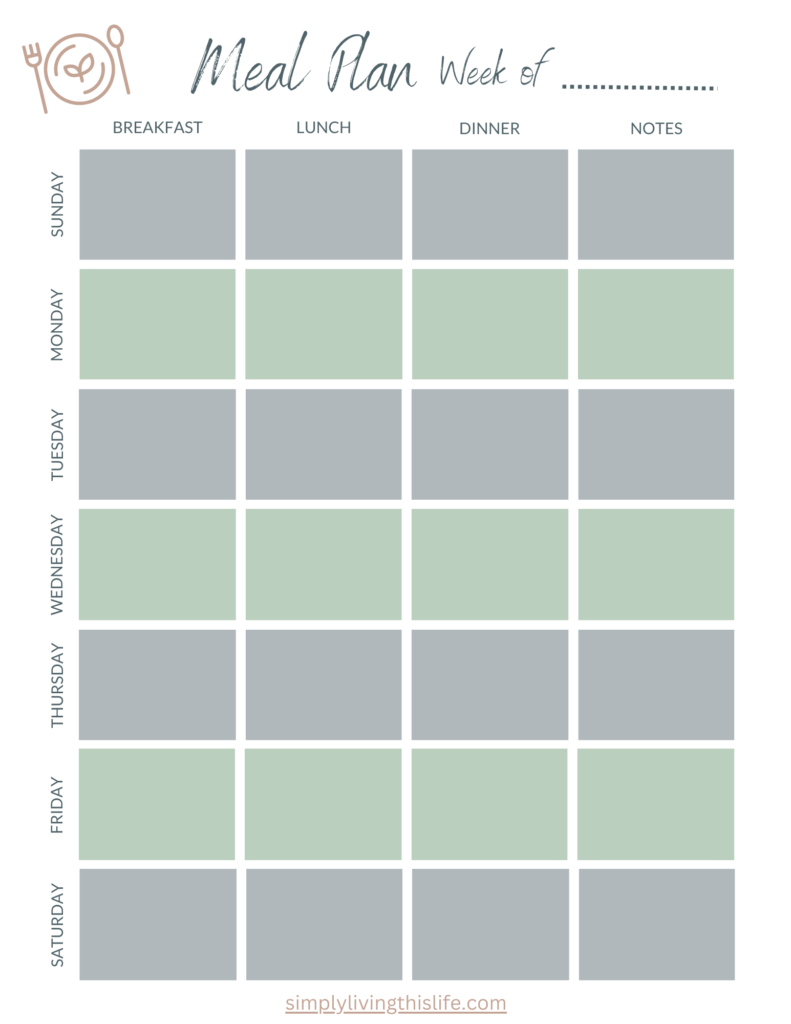

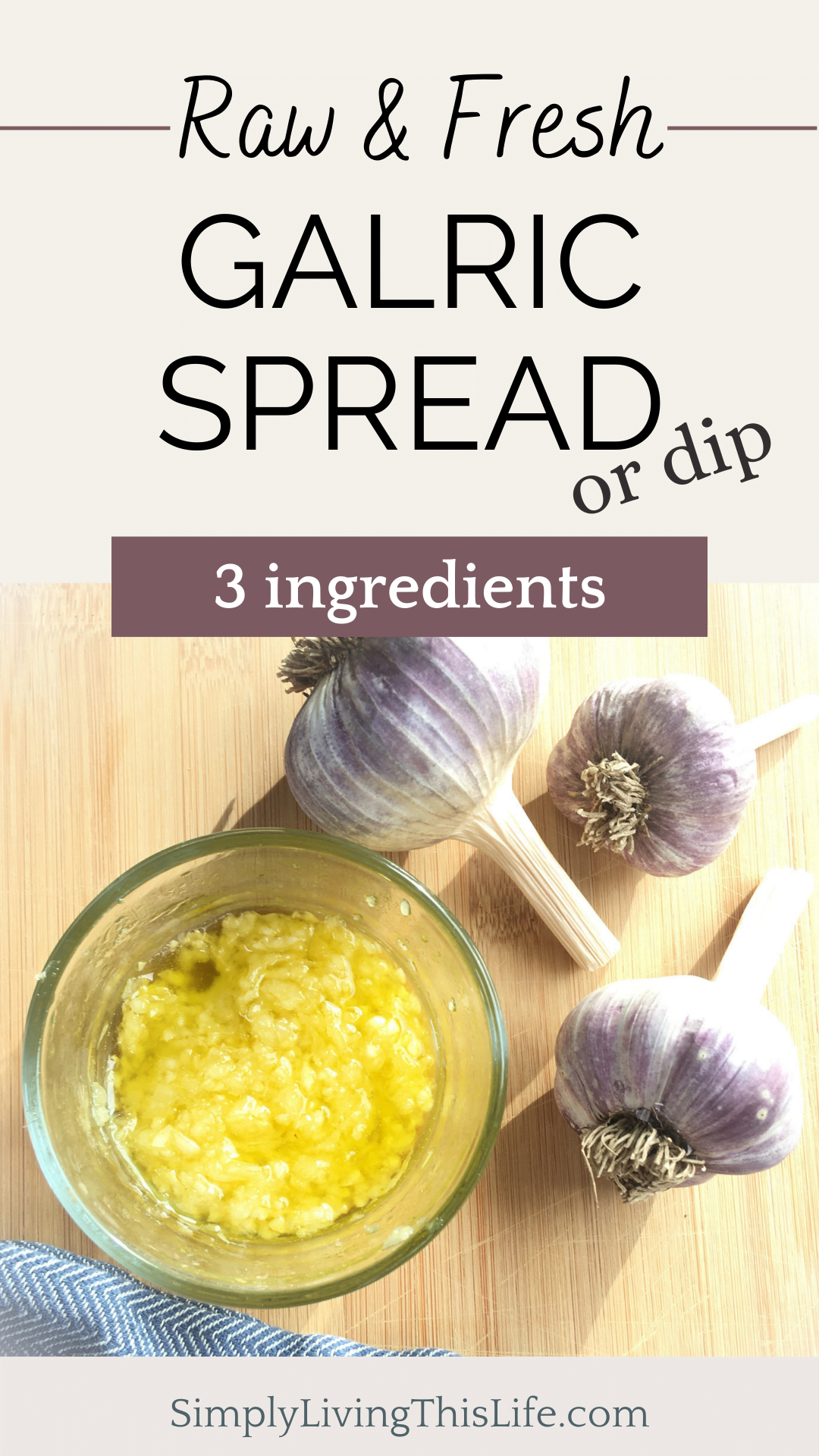
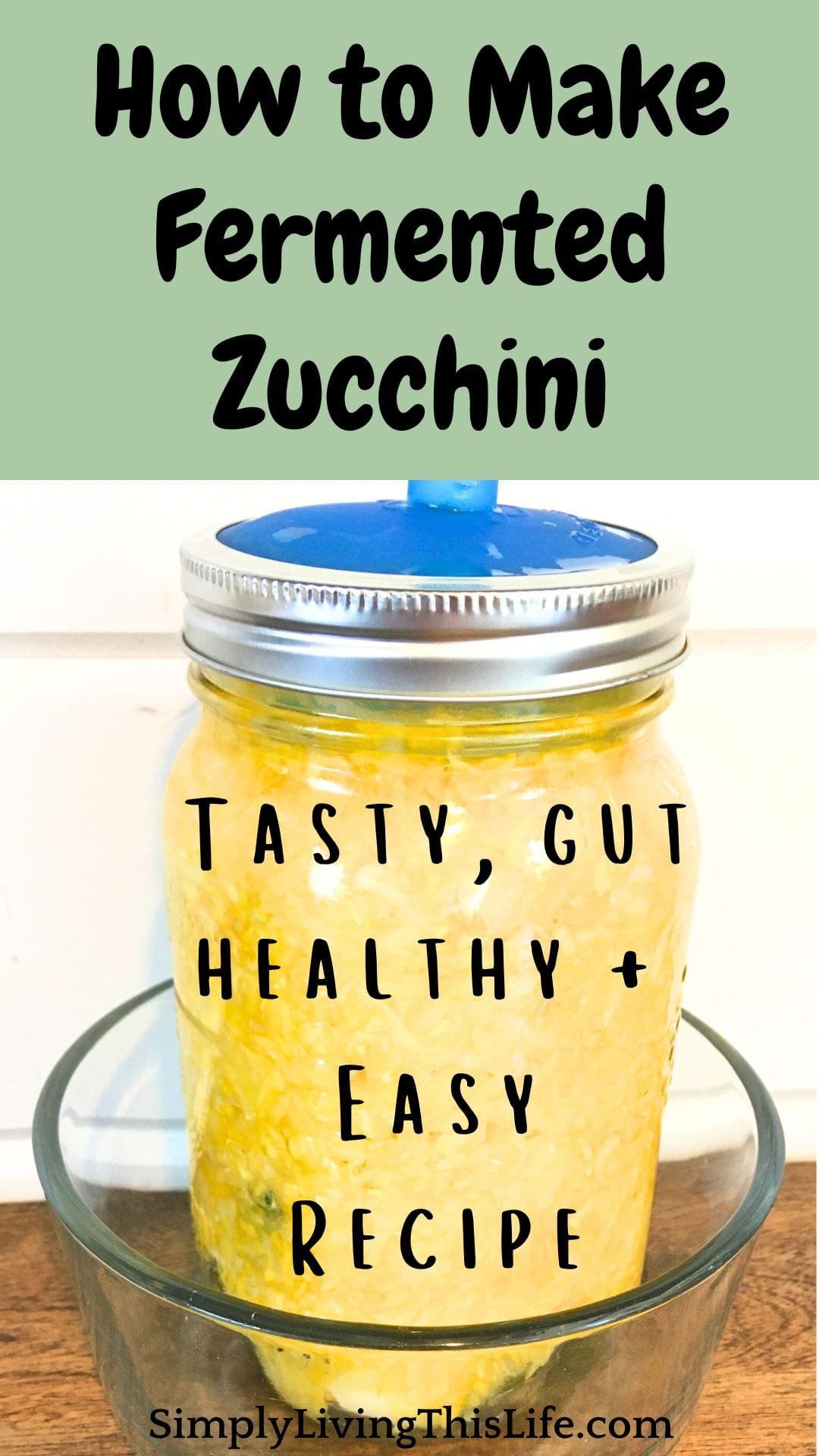
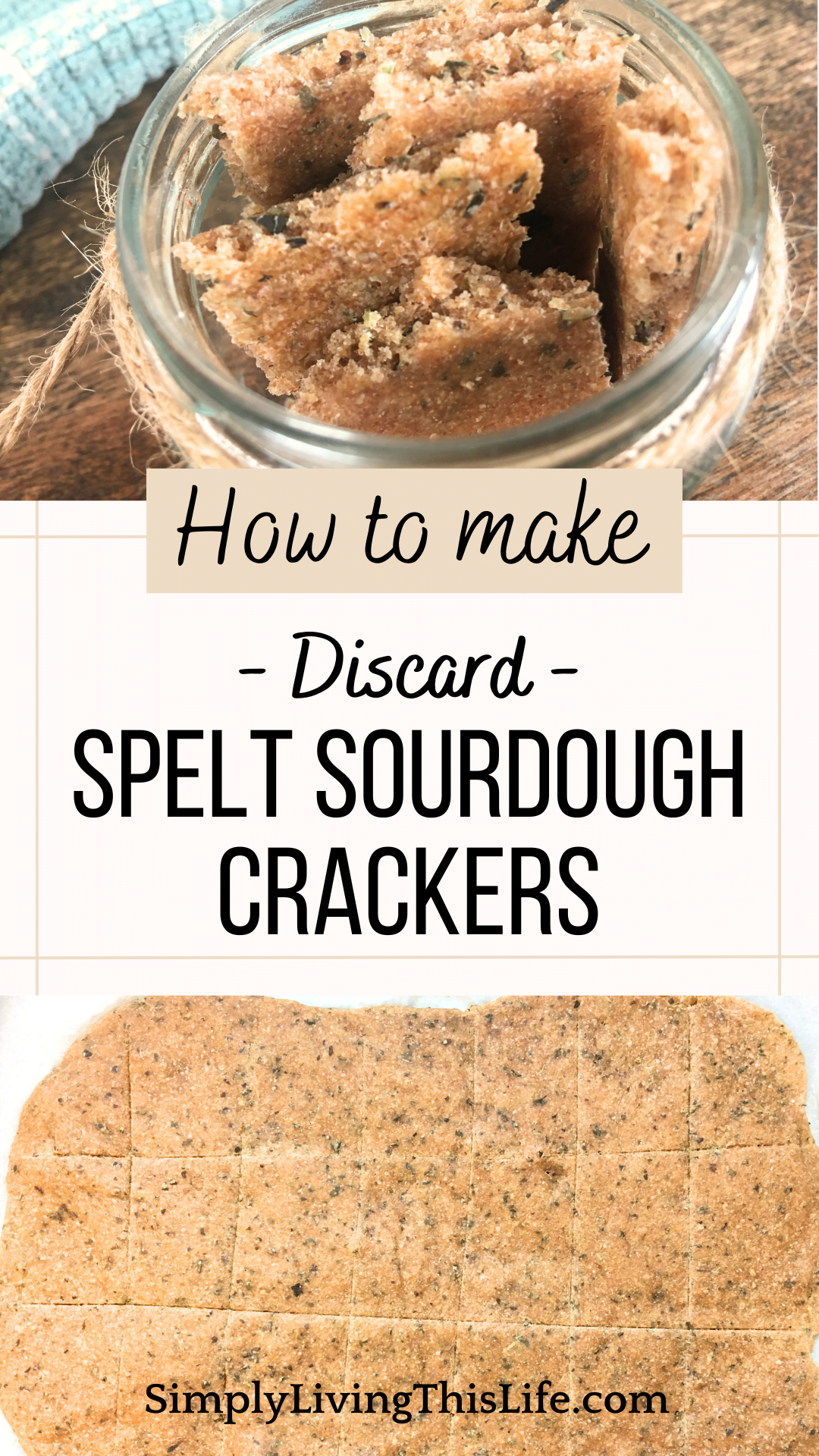





I love how you explain this easily and in depth!! Will have to refer back once I can try this.
These lacto-fermented pickles with garlic & dill sounds so delicious! Yum!
We love dill pickles in the summer! Thanks for this simple recipe.
Question I have the fermentation tops. When the pickles are all done do I remove wgts and fermentation lid and place a solid lid on prior to the refridgerator
That’s right. I remove the fermenting glass weights off the pickles, then I like to place a plastic mason jar lid on top as I’ve found the regular metal rings will corrode over time. However, if you’re eating the fermented pickles up right away, the regular mason jar lid will work just fine!